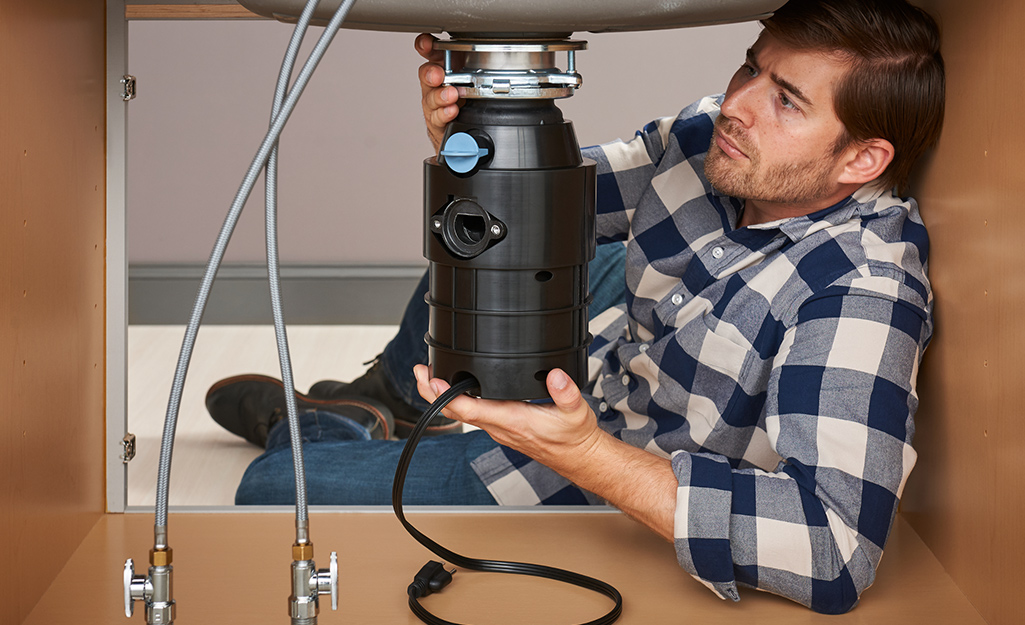Easy-to-Follow Instructions for Repairing a Leaky Waste Disposal
Easy-to-Follow Instructions for Repairing a Leaky Waste Disposal
Blog Article
Just how do you feel on the subject of Garbage Disposal Leaking From Bottom?

Garbage disposals are necessary cooking area appliances that aid in getting rid of food waste successfully. However, a leaking waste disposal unit can be a frustrating and unpleasant trouble to manage. Fortunately, many leaks can be taken care of quickly with a couple of straightforward actions. In this short article, we will certainly review just how to deal with a dripping garbage disposal effectively.
Intro
Waste disposal unit are set up under kitchen area sinks and are made to shred food waste right into smaller pieces, enabling it to go through the pipes system quickly. While these tools are usually reliable, leakages can occur with time because of deterioration, loose links, or damage to the system.
Typical Causes of Leaks in Waste Disposals
Worn Seals and Gaskets
Seals and gaskets play an essential function in stopping water from dripping out of the waste disposal unit. With time, these components can deteriorate, resulting in leakages around the disposal unit.
Loose Links
The links between the waste disposal unit and the pipes system can become loose in time, causing water to leak out during operation.
Splits or Holes in the Disposal Unit
Physical damage to the garbage disposal, such as cracks or holes in the housing, can also lead to leaks.
Recognizing the Resource of the Leakage
Prior to attempting to fix a dripping waste disposal unit, it is important to determine the resource of the leak. This can typically be done through aesthetic examination or by conducting basic examinations.
Visual Examination
Check the garbage disposal device meticulously for any signs of water leakage. Pay close attention to locations around seals, gaskets, and connection points.
Testing for Leaks
One method to test for leaks is by running water via the disposal device and looking for any type of visible signs of leakage.
Tools and Products Needed for Repairing a Leaking Garbage Disposal
Prior to beginning the repair work process, collect the essential tools and materials, including a screwdriver, flexible wrench, plumber's putty, replacement seals or gaskets, and epoxy or patching product for fixing splits or openings.
Step-by-Step Overview to Repairing a Dripping Waste Disposal Unit
Switch off the Power
Before attempting any kind of repair work, ensure that the power to the waste disposal unit system is switched off to avoid the danger of electrical shock.
Find the Leak
Recognize the exact location of the leak and determine the cause.
Tighten Connections
Utilize a wrench to tighten up any loose connections in between the disposal device and the pipes system.
Replace Seals or Gaskets
If the leak results from used seals or gaskets, eliminate the old parts and replace them with new ones.
Patching Splits or Holes
For fractures or openings in the disposal system, use epoxy or an ideal patching product to secure the broken area.
Evaluating the Garbage Disposal After Repair Service
As soon as the fixing is complete, examine the waste disposal unit by running water via it to guarantee that the leak has actually been dealt with.
Preventive Maintenance Tips to Stay Clear Of Future Leaks
To stop future leakages, it is important to do regular upkeep on your waste disposal unit. This consists of maintaining it clean, staying clear of placing non-food products or difficult things down the disposal, and occasionally checking for leaks or other issues.
Verdict
To conclude, repairing a leaking garbage disposal is a relatively straightforward procedure that can be finished with basic devices and products. By following the actions detailed in this short article and exercising preventive upkeep, you can keep your garbage disposal in good working condition and avoid expensive fixings in the future.
HERE’S HOW TO FIX YOUR GARBAGE DISPOSAL
WHAT TO DO IF SOMETHING IS STUCK IN YOUR GARBAGE DISPOSAL
If the impeller won’t turn, there’s probably something stuck in the disposal. It could be a steak bone or peach pit, although plumbers report pulling all sorts of inappropriate objects out of disposals, such as bottle caps or aluminum foil. Make sure power to the disposal is off, and look inside to see if you can see the source of the jam.
Never stick your fingers in a disposal. Pull out anything you see with tongs or pliers.
If the disposal still won’t work, it may be time to call a plumber or consider buying a new disposal. GEM Plumbing & Heating is here for all of your garbage disposal needs.
WHAT TO DO IF YOUR GARBAGE DISPOSAL DRAIN IS CLOGGED
Take everything out from underneath your sink and put a bucket or other container under your disposal to catch any water that drains out. Disconnect your disposal from the power supply. If it’s plugged into a wall outlet, unplug it. If it’s hardwired into an electrical box, go to the electrical panel and turn off the breaker for the disposal. Pour ¼ cup of baking soda into the drain, followed by ½ cup of white vinegar. Give the solution a few minutes to fizz and do its work. Look into the disposal with a flashlight to see if you can see an object that might be causing the clog. If you see it, remove it using tongs or pliers. MORE TIPS ON DEALING WITH A CLOGGED GARBAGE DISPOSAL
Never use drain cleaner in a garbage disposal. It can damage the plastic parts inside the disposal. You can also be splashed with the caustic liquid while working to clear the clog. Beware! Never stick your fingers into a garbage disposal. Trust us — not a good idea. In many instances, your dishwasher drains through your garbage disposal. This allows the disposal to grind any large food particles that may be drained out of your dishwasher. There are some jurisdictions, however, where the plumbing code prohibits such a connection. WHAT TO DO WHEN YOUR DISHWASHER DRAINS THROUGH THE DISPOSAL
Run some water in the sink so your plunger has at least a ½-inch of water to create a seal and plunge vigorously up and down several times. You may need to repeat this several times. Run hot water down the drain to clear any residue that remains.

We hope you enjoyed reading our section on Tips on Fixing a Leaking Garbage Disposal. Thanks a ton for taking time to read through our short article. Liked our piece of writing? Please share it. Let somebody else locate it. Bless you for your time. Please visit our site back soon.
Call Today Report this page